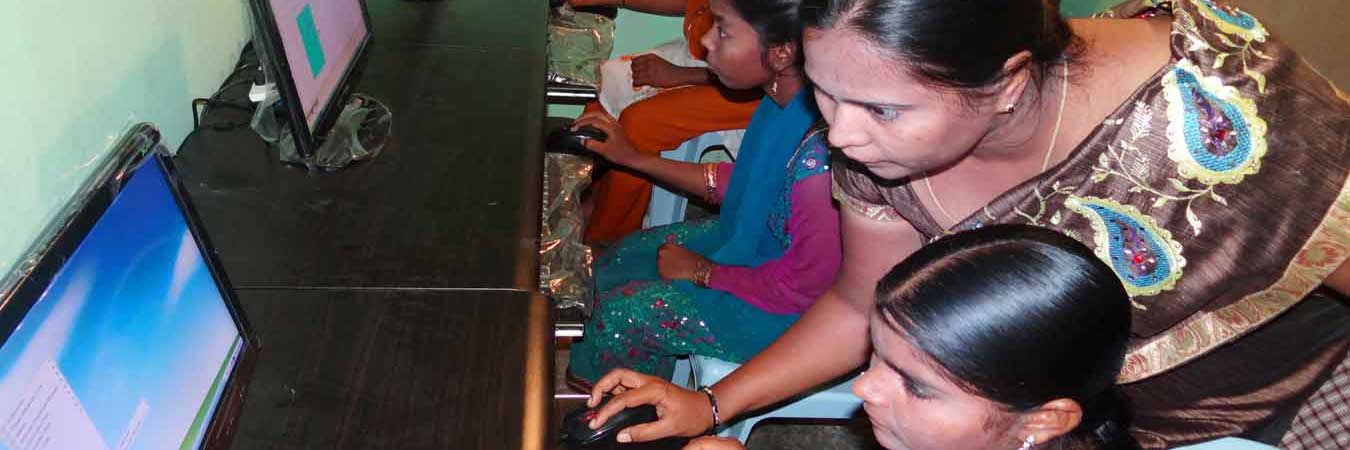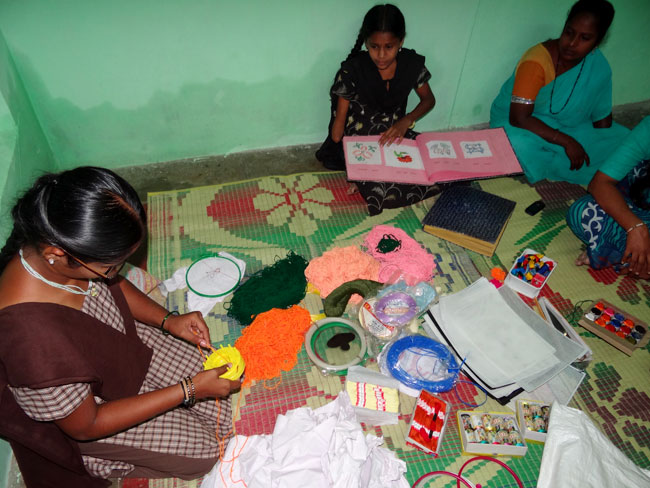

VOCATIONAL TRAINING
In 2005, HEARDS launched HEARDS Institute, its vocational skilling arm. The objective was to train youth, widows, and marginalized women from economically disadvantaged backgrounds (age 18‐35 years) and provide them with employable skills, coupled with access to employment and entrepreneurship opportunities. Today HEARDS Institute programs enable youth to access entry-level positions and placements in 10 major vocations. Approximately 300 young people were reached in 2020-2021, and the youth were trained and subsequently placed in entry-level jobs or helped to start their own businesses.
CONTEXT
India will have the world’s youngest population by 2020, with an average age of 29 years and 13 million people entering the workforce each year. However, as the ASER survey has shown, the learning outcomes of students completing primary or even secondary schooling are extremely low, closing pathways to senior secondary or higher education. While vocational skills could be a short-term solution, only 2 percent of the workforce in India is currently formally skilled, leaving the vast majority of youth without the skills, know-how, or networks to enter the workforce. This leads to large-scale unemployment or under-employment, even as industries are unable to fill their job vacancies.
APPROACH
HEARDS conducts courses of 6 months or 1-year duration, focusing on young men and women from rural areas and urban slums. The model is based on strong industry linkages and youth counseling and focuses on hands-on skills training. Courses taught include tailoring, embroidery, sari painting, hospitality (housekeeping, food and beverage service, and food production), healthcare nursing, and beauty and wellness services. In addition to industry-specific skills, students also learn Basic English, computer literacy, and life skills. HEARDS has a four-step approach to its vocational training programs:
- Mobilization
- Training
- Placement
- Post-placement support
For youth who are interested in setting up their own enterprises near their homes and to support the creation of new jobs, HEARDS provides mentoring support to set up micro-enterprises. Up until now, we have supported over 500 such youth (primarily women) to set up successful enterprises in the fields of trades mentioned above.
A unique aspect of HEARDS vocational training model is the focus on post-placement tracking and support, coupled with financial sustainability. Youth placed in wage employment or supported to set up micro-enterprises are tracked and mentored for a one-year period to encourage them to continue their current jobs, upgrade to new placements and acquire additional skills. Students are further supported to overcome problems of migration through the HEARDS Alumni (PAL) Network, which provides support in the form of accommodation and mess facilities, counseling, social networks, mediation with employers, support in accessing health services, etc. This suite of post-placement services has been instrumental in increasing the retention of students in their first jobs.
HEARDS has also initiated innovative models to impact the skilling ecosystem. These include an ‘Employment Awareness’ model targeted at adolescent girls and young women to tackle the low exposure and lack of information prevalent, particularly among rural youth.
REACH & SCALE
HEARDS runs Vocational Training Center in Chittoor, Andhra Pradesh, India, with a placement rate of over 85 percent. HEARDS vocational training programs have helped nearly 1000 youth across the District improve general employability skills, and more than 1500 youth in industry-specific trades. We have also developed partnerships with a large number of employers to offer entry-level jobs to our graduates.
re available to them. The women of the slum/village have also used their skills to work from home.
